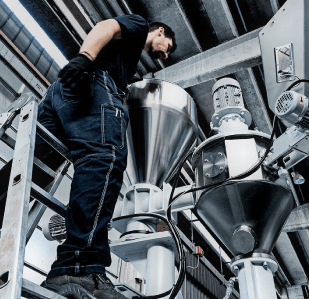In Brief
PVC processing requires compounding, but ingredient quality variations lead to inconsistencies and higher production costs. Changes in additives necessitate adjustments in formulations, causing longer setting times and more rework. Utilizing tools like a torque rheometer can help find optimal additive combinations, ensuring product consistency while reducing operator dependency.
The Impact of Ingredient Variability on PVC Processing
PVC is one polymer that cannot be processed without compounding. Despite standardizing formulation and carrying out mixing, it is still observed that we do not get the repeatability in terms of processing and properties of PVC products. This happens because the quality of ingredients in the compound, including PVC, is variable. Most of the PVC processors rely on suppliers’ test reports.
Organizations try to buy additives at slightly cheaper rates to save money; even if most PVC processors use the same standard formulation, each time there is a change in additive, the formulation needs to be adjusted.
This leads to:
- More setting time
- More rework
- Inconsistency in the product properties
- Increase in production costs
It is important to understand that there is no standard formulation, so the process cannot be standardized and the process becomes operator-dependent. This defines the requirements of the quality management system.
In order to make the process work as per the standard control plan, without major changes by the operator, we need to modify the compound at laboratory level so that the process works within the set tolerance limits of the control plan parameters.
How is it possible?
There are some instruments that enable it to avoid losses in terms of generating, handling and processing more rework, and inconsistent quality. The best technical instrument for this type of test is the torque rheometer, able to generate a graph that represents the parameters you want to achieve. By continuing to change the mixture of additives to the raw material, you will get graphs that are always different and you will be able to find the best combination to achieve the desired result.
Rheology deals with the viscosity and elasticity of a polymer at processing temperature. This data is then processed and compared on a graph generated by the system. A comparison can be made between the reference graph and the graph for the newly formulated compound, using a new additive or the same additive from a different supplier, tested in the same conditions, for the same quantity of compound and by the same operator.
The comparison will guide us to decide whether to add or reduce the thermal stabilizer or lubricant, or both, and at what level. Once this is carried out, the modified compound would run on the processing equipment in such a way that the operator would not detect the change of recipe and it will run like a compound running earlier. The operator only has to fine-tune it within the tolerance limits of the processing parameters.
You can find out more on the topic on Yashodan Kanade’s website, an expert technician on the subject.






